The royal vole, also called the Korean red-backed vole, is a species of vole endemic to the Korean Peninsula. It lives underground in a burrow, emerging at night to feed on grasses, seeds and other vegetation. The International Union for Conservation of Nature has listed its conservation status as being of "least concern".

The reed vole is a species of vole. It is found in northern and central Eurasia, including northern China and the Korean Peninsula. This species is somewhat larger and longer-tailed than most other voles.
The long-tailed dwarf hamster is a species of rodent in the family Cricetidae. It is found in China, Kazakhstan, Mongolia, and Russia.
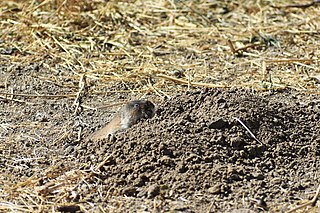
The Zaisan mole vole, or eastern mole vole, is a species of rodent in the family Cricetidae. It is found in central Asia.
The Ganzu vole, Eva's red-backed vole, Eva's vole, Gansu vole, or Taozhou vole is a species of rodent in the family Cricetidae. It is found in mountain forests in China. The IUCN has assessed it as being of "least concern".
The Shansei vole is a species of rodent in the family Cricetidae. It is found only in north-central China where its habitat is forests.
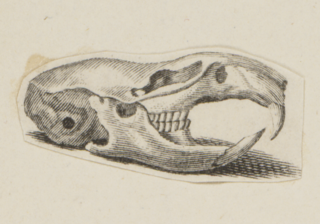
The narrow-headed vole is a species of rodent in the family Cricetidae. Ranging over northern and central Asia and also into Alaska, it is the only species in the subgenus Stenocranius.
The Chinese scrub vole, or Irene's mountain vole, is a species of rodent in the family Cricetidae. It is endemic to mountainous parts of southern China and is very similar to the Sikkim mountain vole in appearance. The International Union for Conservation of Nature has assessed its conservation status as being of "least concern".

Blyth's vole is a species of rodent in the family Cricetidae. It is the only species in the genus Phaiomys. It is found in mountainous regions in northern India, Nepal and China. It is a burrowing rodent and lives in small colonies. It has a wide distribution and faces no particular threats so the International Union for Conservation of Nature has assessed its conservation status as being of "least concern".
Maximowicz's vole is a species of rodent in the family Cricetidae. It is found in northeastern China, Mongolia, and eastern Russia.
The Sikkim mountain vole is a species of rodent in the family Cricetidae. It is found in Bhutan, India, Nepal and China.

Townsend's vole is a species of rodent in the family Cricetidae, the sister species of M. canicaudus. It is found in temperate grasslands of British Columbia in Canada and in the states of Washington and Oregon in the United States.
Oligoryzomys destructor, also known as Tschudi's colilargo or the destructive pygmy rice rat, is a species of rodent in the genus Oligoryzomys of family Cricetidae. It is found along the eastern Andes from southern Colombia, through Ecuador, Peru, and Bolivia into northern Argentina. Its karyotype has 2n = 60 and FNa = 76.
The Duke of Bedford's vole is a species of rodent in the family Cricetidae. It is found only in mountainous parts of central China. It is a rare species and the International Union for Conservation of Nature has assessed its conservation status as being "vulnerable".
The Balikun jerboa is a species of rodent in the family Dipodidae. It is found in arid areas of northwestern China and Mongolia. It eats green plants, plant roots, seeds, grasshoppers and beetles.
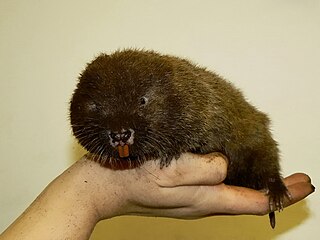
The lesser bamboo rat is a species of rodent in the family Spalacidae. It is monotypic within the genus Cannomys. It is found in Bangladesh, Bhutan, Cambodia, China, India, Myanmar, Nepal, and Thailand.
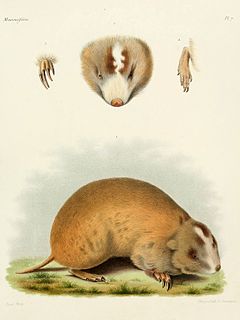
The Chinese zokor is a species of rodent in the family Spalacidae. It is endemic to China, ranging from Qinghai Province eastwards to Beijing in steppe and alpine grasslands. Henri Milne-Edwards first described it in 1867. Eradication programs in the 1990s in Qinghai Province resulted in a population decline to less than a third of the former population. It is considered common and has been assessed as Least Concern by IUCN.
Kozlov's pygmy jerboa is a species of rodent in the family Dipodidae. It is found in northwestern China and southern and eastern Mongolia. Its natural habitat is temperate desert.
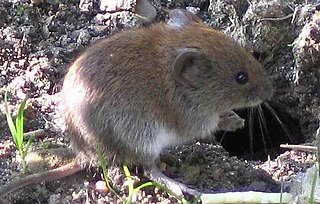
The Myodini are a tribe of forest voles in the subfamily Arvicolinae. Species in this tribe are:

The desert hare is a species of hare found in Central Asia, Northwest China, and the western Indian subcontinent. Little is known about this species except that it inhabits grassland and scrub areas of desert and semi-desert. The International Union for Conservation of Nature has assessed its conservation status as being of "least concern."









